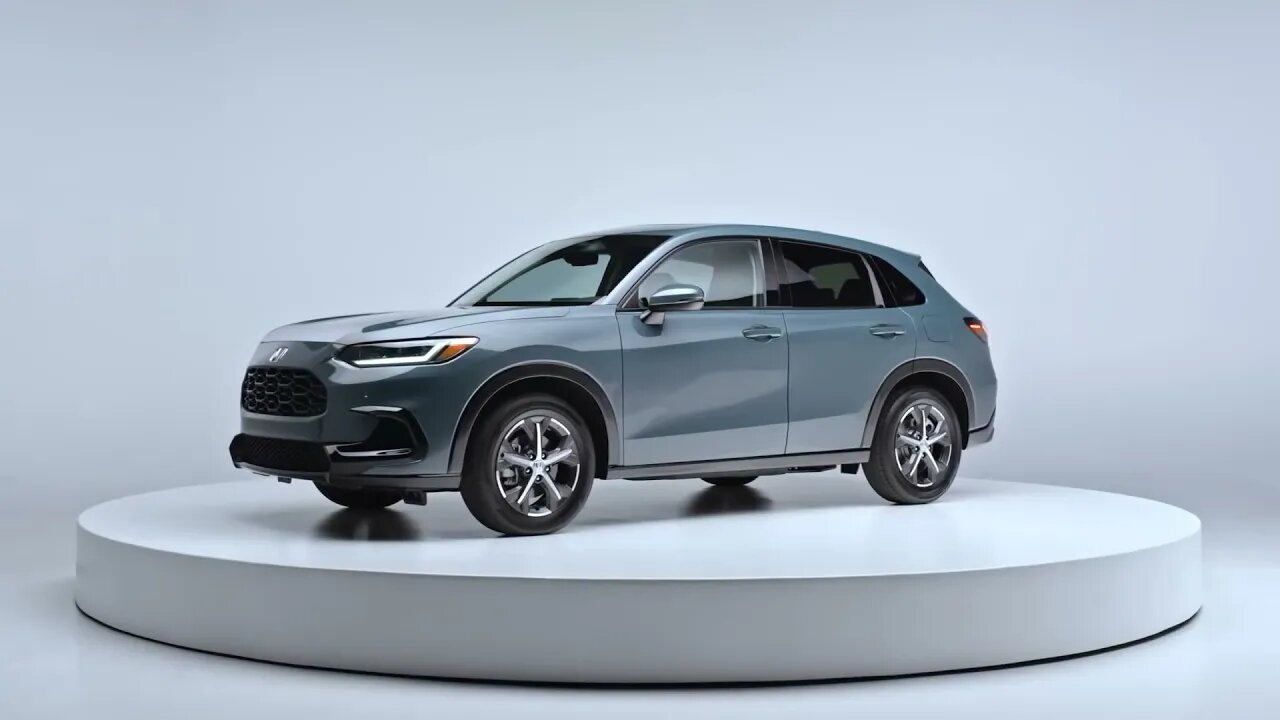Premium Only Content

2023 Honda HR V
Overview
Honda has given its 2023 HR-V a complete makeover, the better to combat the onslaught of desirable and stylish small SUVs that have flooded the market. The outgoing generation was practical and offered good value but it lagged the segment's best—the Hyundai Kona, the Kia Seltos, and the Mazda CX-30—in almost every way. No surprise then that the new HR-V looks totally different from the outgoing model. The new HR-V shares its platform with the Civic and uses a 2.0-liter naturally aspirated inline-four from Honda’s compact sedan. Gone, sadly, is the outgoing model’s trick second-row Magic Seat, which flipped down to make the HR-V one of the most flexible cargo-friendly small SUVs. But the new generation is wider and longer, which Honda claims benefits interior space. Independent rear suspension replaces the old model’s torsion beam setup, a change that promises to improve ride-and-handling. The new model also receives updated infotainment features and more modern driver-assistance technology.
What's New for 2023?
Honda's smallest crossover has been completely redesigned for the 2023 model year and goes on sale this summer.
Pricing and Which One to Buy
LX $24,895
Sport $26,895
EX-L $28,695
Pricing for the 2023 HR-V has increased slightly over the outgoing model, and the mid-range EX trim has been dropped. Of the three remaining trims, we think the Sport makes the most sense, and we appreciate it’s slightly more aggressive exterior styling: it’s the only trim that comes with 18-inch wheels, the largest offered.
Engine, Transmission, and Performance
In Europe, the HR-V is powered by a hybrid powertrain borrowed from the Insight and Accord but the U.S. version comes with a traditional gasoline 2.0-liter four-cylinder that’s good for 158 horsepower. If that sounds familiar, it’s because the same engine serves as the base powertrain in the Civic. In the HR-V, the 2.0-liter four-cylinder feels lethargic and gutless, but since the SUV shares its platform with the Civic, we could see a 180-hp turbocharged 1.5-liter or a hybrid powertrain join the lineup down the road. For now, front-wheel drive and a continuously variable automatic transmission (CVT) are the standard arrangement but all-wheel drive is available as an option on all trims. The outgoing HR-V didn’t deliver the quiet athleticism we expect of Hondas, but this new generation corrects that with a chassis inherited from the spry Civic.
Fuel Economy and Real-World MPG
Fuel economy estimates are highest on front-wheel drive models, which are rated at 26 mpg city and 32 mpg highway. Going with all-wheel drive drops the city rating to 25 mpg and the highway rating to 30 mpg. When we get a chance, we’ll take the new HR-V on our 75-mph highway fuel economy test route and report its results here. For more information about the HR-V's fuel economy, visit the EPA's website.
Interior, Comfort, and Cargo
The HR-V adopts a more modern interior design inspired by the redesigned Civics’; it’s both classic and attractive. The front seats are comfortable and supportive while providing a wide range of adjustment. The outgoing model offered Honda's novel second-row Magic Seat, which allows the rear bench to flip and fold to create an especially low, flat floor. That feature helped the HR-V lead the segment in cargo capacity despite its diminutive size. Unfortunately, the new HR-V has abandoned that feature, but Honda claims that the new model’s cargo bay is larger and that lift-over height has been reduced to aid with loading heavy items.
#wikicar
#hondahrv
#2023hondahrv
-
 7:31
7:31
A collection of the best cars in the world
2 years ago2023 Toyota 4Runner Overview
506 -
 11:52
11:52
Exploring With Nug
2 hours ago $0.03 earnedWhat’s Hiding Under This Dallas Lake We Found a Vehicle!
7.07K3 -
 LIVE
LIVE
Phyxicx
3 hours agoRocket League with Rance tonight! - 8/24/2025
41 watching -
 LIVE
LIVE
ManoloCalifas
24 minutes ago🔴 LIVE - DARK SOULS 3 SEAMLESS CO-OP
219 watching -
 2:59:09
2:59:09
Barry Cunningham
8 hours agoBREAKING NEWS: PRESIDENT TRUMP SET TO TAKEOVER CHICAGO AND BOSTON!
26.1K26 -

LumpyPotatoX2
3 hours agoSunday Funday on HellDivers - #RumbleGaming
9.56K -
 3:11:52
3:11:52
Esports Awards
5 hours agoEsports Awards: Decade Awards 2025
47.8K4 -
 1:02:58
1:02:58
Sarah Westall
4 hours agoMILITARY WHISTLEBLOWER: How Social Media Military Level Psyops are Manipulating You w/ Patrick Bergy
15.3K6 -
 30:41
30:41
Stephen Gardner
3 hours ago🔥WHITE HOUSE GETS UNEXPECTED BIG WIN!
18.4K17 -
 9:39
9:39
MattMorseTV
5 hours ago $0.55 earnedVance just DROPPED a BOMBSHELL.
15.3K54